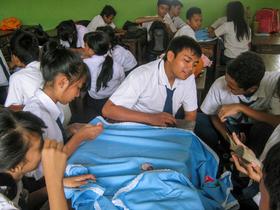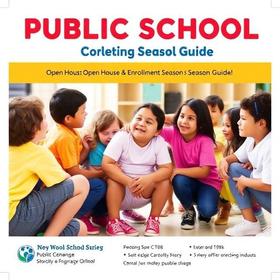It has been nearly two decades since sex education was a requirement in New York City schools. However, an alarming rise in teen pregnancy rates throughout the city has prompted the Bloomberg administration to mandate sex-ed classes in the city school district once again. As schools across New York get ready to deliver the new curriculum to students, many parents and taxpayers are up in arms about the idea of forced sex education for middle and high schoolers.
This video reports on sex-education in New York City schools.
Why Sex Ed?
The Huffington Post reports statistics from the Department of Health that show 83 out of every 1,000 New York City teens become pregnant. This is much higher than the national average of 72 out of every 1,000 teen girls. The figures come from a 2011 study conducted by the Guttmacher Institute. The institute also found that other developed nations around the globe had even lower rates of teen pregnancy, with 31 per 1,000 girls in Sweden and 28 per 1,000 teens in Canada.
“We have students who are having sex before the age of 13; students who have had multiple sexual partners, and students who aren’t protecting themselves against sexually transmitted diseases and HIV/AIDS,” New York City School’s Chancellor Dennis M. Walcott told ABC News. “I believe the school system has an important role to play with regard to educating our children about sex and the potential consequences of engaging in risky behavior.”
Sex Education and Minority Students
The mandate will be restricted to schools within New York City. Currently, the city requires one semester of health education in both middle school and high school, but sex education is not required. This new mandate will put the city in the minority since only 20 states and the District of Columbia currently mandate sex education in schools. According to the New York Times, the mandate is part of a bigger initiative by Mayor Bloomberg to improve the lives of Latino and African American youths in the city. City statistics show that these populations are more likely to have unplanned pregnancies and contract STDs than their Caucasian counterparts.
This video from Unesco discusses comprehensive sexuality education.
“It’s obviously something that applies to all boys and all girls,” Linda I. Gibbs, deputy mayor for health and human services told the Times. “But when we look at the biggest disadvantages that kids in our city face, it’s blacks and Latinos that are most affected by the consequences of early sexual behavior and unprotected sex.”
What will the Classes Teach?
The mandate will streamline the sex education process, bringing an end to the patchwork sort of curriculum that is presented in some schools and not others. Schools will still have the choice of when to present the curriculum, although Chancellor Walcott strongly recommends that the first-class take place in middle school – in 6th or 7th grade – while the second class takes place during the 9th or 10th grade in high school. Walcott also suggests using two commercially available programs, HealthSmart and Reducing the Risk, alongside the school curriculum.
This TEDTalk discusses sex education.
“The programs are very effective, and involve some lecturing by teachers and a variety of interactive activities, like small group or class discussions and role-playing to help young people practice saying ‘no’ to unwanted sex,” Doug Kirby, a senior research scientist at ETR Associates, the non-profit group that developed these two programs, explained to ABC News. Kirby added that the curricula are also age-appropriate, emphasizing abstinence in the younger grades and dealing with a condom and contraceptive use in the high school class.
The programs for younger children include discussions about anatomy, puberty, pregnancy, and the risks associated with unprotected sex. The emphasis of the material is on getting students to wait to experiment until they were older. For teens that may be currently engaged in sexual activity, the focus shifts to safe methods of sex in hopes of reducing rates of teen pregnancy and the incidences of sexually transmitted diseases.
More Education Means More Teen Sex?
Some parents and taxpayers are opposed to the new mandate because they are concerned that talking about sex more in the classroom will result in an increase in sexual activity. However, many statistics suggest that this is not the case. Kirby told ABC that four different studies showed that Reduce the Risk actually delayed the initiation of sex for many students who participated in the program.
“We have very strong evidence that many sex education programs can actually have a positive impact on sexual behavior, and they do not do any harm – they do not increase sexual activity,” Kirby said, and then added, “They can reduce risky behavior. And if we can do that, we will end up reducing unintended pregnancies and sexually transmitted diseases.”
Parents who are concerned about the classes will have the option to hold students out of specific sessions that talk about birth control for religious or cultural reasons.
“I have always believed that parents should have the right to opt-out of certain sex education lessons such as conversations on prevention and birth control, as they will in this case,” Walcott told ABC. “But I also feel we have a responsibility to offer our students access to information that will keep them safe and healthy.”
The new sex education classes are scheduled to begin in New York City classes during the second half of the 2011-2012 school year. The classes, which will be co-educational, will be incorporated into the current health education courses and will incorporate a combination of lectures, group discussions, and role-playing exercises.
Questions? Contact us on Facebook. @publicschoolreview















